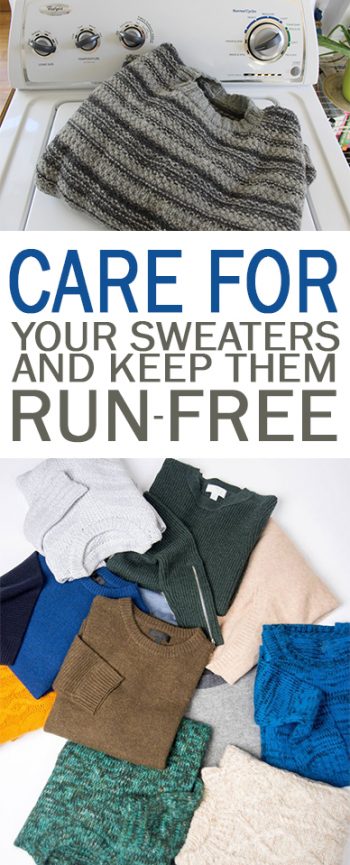Sweaters are my favorite thing to wear all winter long, hands down. To keep your sweaters looking their best, there are some things you should know. Today I’ve got some great tips to help us all take better care of our sweaters and keep them run-free.
1.How should you store your favorite sweaters? Can you hang them in the closet so that they don’t get those annoying shoulder bumps? Yes, and it’s easy! Just fold your sweater in half lengthwise, then hang it over the hanger just like you would hang a pair of pants.
2. How often should you wash a sweater? Would you be surprised if I said not every time you wear it? Cotton, silk and cashmere sweaters can be worn 2-3 times between washes, and more durable wool sweaters can go up to five. They’ll last longer if you don’t wash them too often!
3. A wool sweater should be dry cleaned, but others such as cotton can be hand-washed or run through the delicate cycle in your washing machine. The exception is cashmere, which should always be hand-washed. Try a delicate soap such as Woolite. {You can purchase some at Amazon!}
4. Don’t dry that sweater in the dryer! To avoid shrinking it, always lay a wet sweater on a clean towel. Roll the sweater and towel up together to absorb the excess moisture. Once excess moisture is gone, lay the sweater flat on a clean towel or a drying rack until it’s dry.
5. To get rid of pills on your favorite sweater, use a disposable razor {like the one your shave your legs with} to slice off the pills. Easy!
6. If you get a run or a snag in your sweater, don’t despair. As soon as you notice it, grab a crochet hook. Turn the sweater inside out, and use the hook to pull the snag from the front to the inside. You can knot it to keep it in place, but now no one can see the snag!
7. To shrink a sweater than has stretched out too much, try this trick. If it’s mildly stretched, mist it with water from a spray bottle. If it’s a lot, get it soaking wet. Now put the sweater in the dryer and run it on high heat until it is completely dry. It should be good as new!
Resource for this post:



Leave a Reply